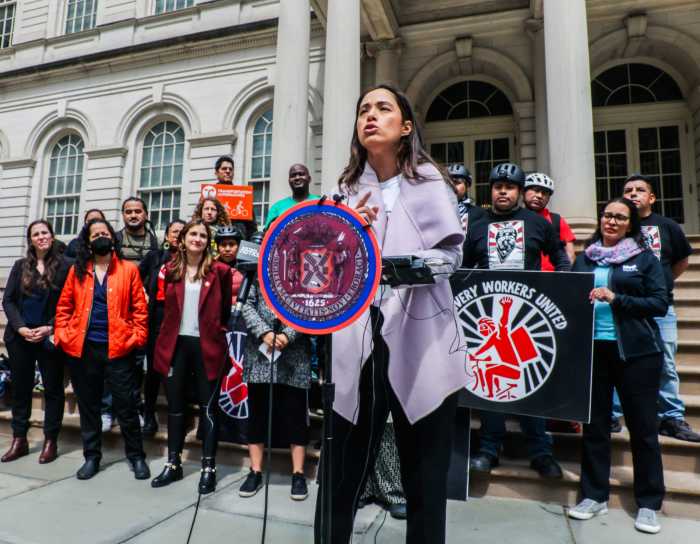
Manhattan has one supermarket for every 7,178 of its residents, and its borough president said that must change.
After watching community after community mourn the loss of their neighborhood grocery store, Manhattan Borough President Gale Brewer decided to survey the state of the industry. She counted 229 full-scale supermarkets in the borough, according to a report Brewer’s office released Wednesday.
“The first step in solving a problem is to make a list,” Brewer said in a statement. “I’m happy we can provide that list to New Yorkers, along with findings to jumpstart the conversation about how government can help neighborhood supermarkets stay open.”
Nelson Eusebio, head of the National Supermarket Association, said competition from new food delivery services, rent increases and a higher minimum wage have challenged grocery stores. He said Manhattan stores have been particularly stressed because its neighborhoods have undergone more dramatic gentrification.
“The rents of supermarkets are also effected,” Eusebio said, noting that supermarkets can only raise their prices so much before shoppers will look elsewhere. “You sell a can of beans for 99 cents. … We can’t just take that can of beans and try to sell it for $1.29 the next day. People won’t pay for it.”
When A&P and Pathmark went through bankruptcies, stores were shut across the city over the past few years, including the East Harlem Pathmark and a Food Emporium in Turtle Bay.
Locals have tried to protest other announced closures with mixed results. An Associated Supermarket in Chelsea shut down despite pleas. When faced with community pressure, a Washington Heights landlord planning to rent out an Associated Supermarket’s store to Walgreens agreed to let the supermarket sublease some of the space, the report said.
Brewer’s report, the most recent analysis since 2008, suggests supermarkets have been closing-up shop over the past nine year. The report found community district 5, which includes Flatiron, Herald Square and central Midtown, had the fewest grocery stores. Eight shops in that area stocked fresh produce, meat or fish, dairy products, dry or canned goods and prepared foods — the criteria Brewer’s team used to separate supermarkets from bodegas and pharmacies.
The area’s food shopping options are so sparse that Maria Santoni said she typically rents a car once a month so she can buy groceries in Queens.
“With three children, I have to,” Santoni said.
Other Manhattanites also typically commute to grocery stores.
Lucia Ahn, a pianist living in the West Village, said she travels to Trader Joe’s or H-Mart near Herald Square.
“I feel like well-priced supermarkets are just disappearing in the city,” Ahn said.
Brewer suggested the city ease up on regulations that can be expensive for supermarkets and exempt them from a commercial rent tax levied only in lower Manhattan. She also urged the city to expand FRESH, an initiative that offers tax and zoning benefits to grocery shops in northern Manhattan and other boroughs.
Four shops in Manhattan have been approved to receive zoning benefits and one has been authorized to get financial perks from the FRESH program, according to Shavone Williams, a spokeswoman for the city’s Economic Development Corporation.
“The goal of the FRESH program is to target food deserts and provide more healthy food options for the highest need communities,” Shavone said in an email. “That said, we are always happy to meet with our elected leaders and discuss any ideas for ways to make the program even better.”
Correction: An earlier version of this story featured a headline with the name Gail Brewer; the correct spelling is Gale Brewer.




































